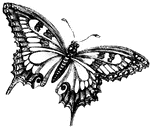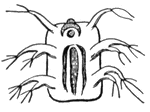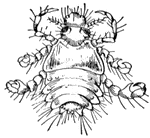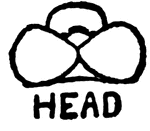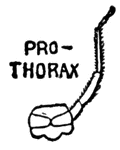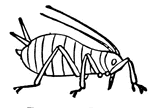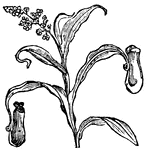
Pitcher plant
The pitcher plant is remarkable for having the end of its leaf turned up so as to form a complete pitcher,…
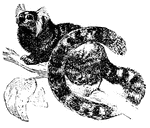
Marmoset
The marmosets are distinguished from other monkeys by their sharp and crooked claws. They are skillful…

Lemur
The lemur (Latin, lemures, ghosts) get their name from the fact that their movements are noiseless,…

Fox
The fox is characterized chiefly by its pointed muzzle, short legs and its bushy tail. During the day,…

Badger
Badgers have long, wide bodies with short legs. They are nocturnal, and eat earthworms, insects, vegetables…

Kinkajou
The kinkajou lives in S. America and spends most of its life in trees. It hunts at night for insects…

Shrew
Shrews are among the smallest mammals. They have long snouts that they use in grubbing the earth in…
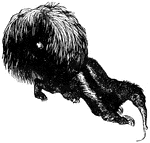
Crested Anteater
Anteaters are toothless four legged mammals. They have elongated heads and sticky tongues. It tears…

Six-banded armadillo
Armadillos live on carrion, insects and fruit. They are all small, except for the Gigantic armadillo…
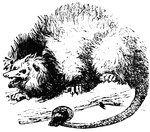
Opossum
The opossum is nocturnal and arboreal. At night it searches for insects, birds, eggs, fruit, etc. It…

Curlew
These birds are characterized by their curved beaks. Their food consists of insects, worms, slugs, aquatic…
Centipede
The covering of millipedes and centipedes, which looks like jointed armor, gives firmness to the body,…

Cecropia Moth
This moth has large wings, measuring five to six inches from tip to tip. It is found all across the…

Tiger Beetles
Beetles form a large group of insects that number over 300,000 species. They all have hard wings which…

Caterpillar Hunter Beetles
Beetles form a large group of insects that number over 300,000 species. They all have hard wings which…
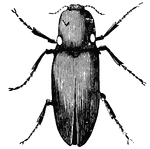
Lightning Spring Beetles
Beetles form a large group of insects that number over 300,000 species. They all have hard wings which…

Weevil
Beetles form a large group of insects that number over 300,000 species. They all have hard wings which…

Praying Mantis
The praying mantis is so called from the attitude which it assumes when it is watching for its prey.…

Leaf Insect
Walking Sticks and Leaf Insects lead a sluggish life among the branches of shrubs, living on the young…

Locust
Locusts are in the grasshopper family, although they have shorter legs and antennae. They can be extensively…

Ichneumon
The insects of the Ichneumon family have long,slender bodies, long ovipositors and long antennae.
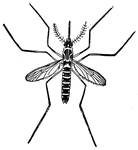
Mosquito
Mosquitos are parasitic insects that suck blood from humans and other mammals. They are known to spread…

Chameleon
This type of lizard lives on trees, clinging to the branches by their feet and prehensile tails. They…

Curlew
These birds are characterized by their curved beaks. Their food consists of insects, worms, slugs, aquatic…

Pheasant
The pheasant prefers wooded slopes or marshy plains. They eat grain, berries, worms and insects.

Golden Pheasant
The pheasant prefers wooded slopes or marshy plains. They eat grain, berries, worms and insects.
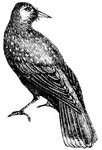
Nut-cracker Crow
The nutcracker has a straight bill for penetrating under the bark of trees in search of insects, (Figuier,…

Nightjar
The Night-jar is a bird of evil omen in the estimation of our rural population. The reverse should be…

King Flycatcher
The fly-catcher proper feeds on insects, which it catches on the wing with vivacity and agility which…

Pitcher Plant
The pitcher plant is remarkable for having the end of its leaf turned up so as to form a complete pitcher,…

Venus Fly Trap Leaf
Here is a leaf of the Venus's fly trap which is a spring trap for flies and other insects. Here you…

Venus Fly Trap Leaf
Here is a leaf of the Venus's fly trap which is a spring trap for flies and other insects. The two parts…

Ichneumon
The insects of the Ichneumon family have long,slender bodies, long ovipositors and long antennae.
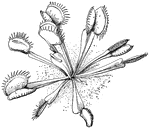
Venus fly-trap
The Fly-trap grows in swampy places, and has a flower that hinges in order to trap insects.
Gregarina
Gregarina is a parasitic protozoan. They live in the alimentary canal of crayfish, and certain insects.
Centipede
Centipedes have flattened bodies, with one pair of legs to each segment. They are carnivorous.

Centipede
This Centipedes has a flattened bodies, with one pair of legs to each segment, but it has less than…

Jumping Spider
The body of a spider consists of two parts, connected by a constricted waist, the unsegmented cephalpthorax…


